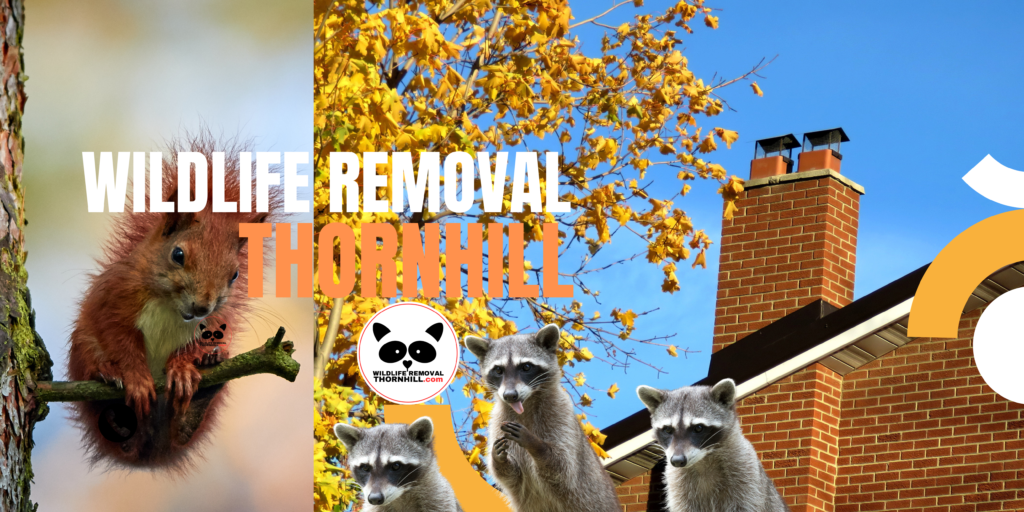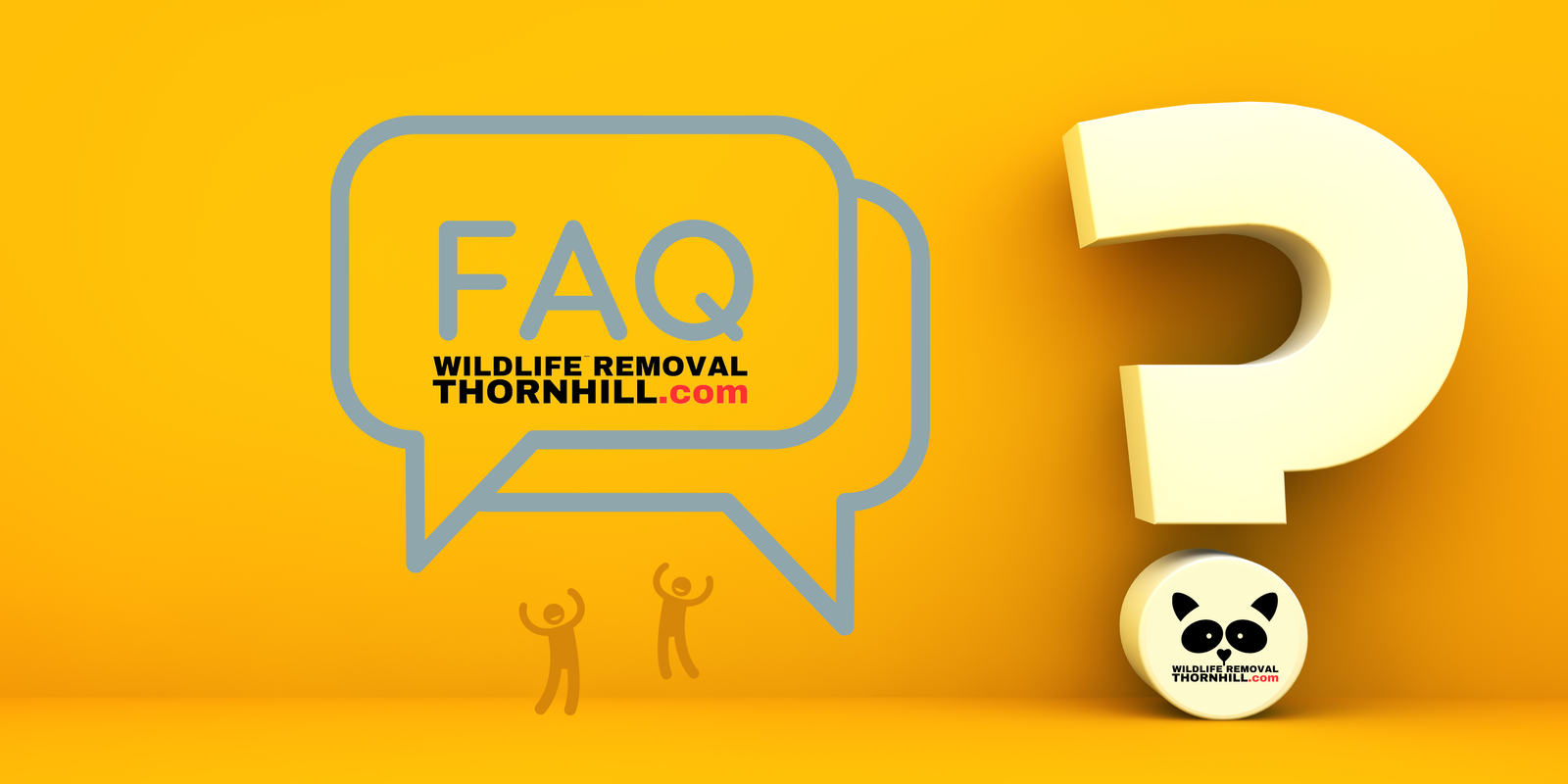Thornhill Customer Inquires About Wildlife Issues
(Q) Why should I choose professional Thornhill wildlife removal over DIY methods?
Opting for professional wildlife removal over do-it-yourself methods is advisable for several compelling reasons. Firstly, professionals bring a wealth of expertise and experience, essential for effectively assessing and handling various wildlife issues. This expertise is particularly crucial in identifying different species and understanding their behaviours, ensuring that the most humane and effective removal methods are employed. Safety is another critical factor; DIY methods often entail significant risks, including potential harm to the homeowner and the animals. Professional wildlife removers are trained to manage these risks safely. Additionally, professional services tend to be more effective, especially in cases of larger infestations or persistent pest issues, where DIY methods might fall short. While DIY options might initially appear cost-effective, they can ultimately be more expensive due to less effective solutions, the need for repeated attempts, and possible property damage. In contrast, professional services provide a more reliable and potentially more economical long-term solution. Lastly, wildlife removal often involves legal and ethical considerations, such as humane treatment and adherence to local wildlife laws, areas where professionals are well-versed. In summary, professional wildlife removal offers a safer, more effective, and legally compliant approach compared to DIY methods.
(Q) Can wildlife come back after removal?
Yes, wildlife can potentially come back after removal, but this largely depends on various factors including the specific species, the reason for their removal, the condition of their habitat, and the methods used for their removal. Habitat restoration plays a crucial role in this regard. If the habitat has been preserved or restored, it offers a suitable environment for wildlife to return. However, habitat loss, especially the removal of plants and trees that stabilize soil, can decrease the chances of wildlife returning, as it leads to increased erosion and reduced nutrient levels in ecosystems. Humane wildlife removal services aim to minimize ecosystem damage and focus on long-term solutions that can facilitate the return of wildlife by ensuring their habitats remain intact and viable. Moreover, environmental impact assessments (EIAs) often consider the effects of various projects on wildlife and their habitats, which can influence whether wildlife can return to an area after being removed. Overall, the possibility of wildlife returning after removal hinges on a balance between human activities, ethical wildlife management practices, and the conservation of natural habitats.
(Q) Are there any health risks associated with wildlife infestations?
Yes, wildlife infestations can pose several health risks. These risks primarily stem from diseases that wildlife can carry and transmit to humans. For example, raccoons are known carriers of diseases such as roundworms and salmonella. People who handle animals, particularly certain types like deer, are at a higher risk of contracting dermatophilosis, a condition more likely to affect those with weakened immune systems. Another significant health risk comes from bat guano, which carries the risk of histoplasmosis. This fungal disease spreads through airborne spores and can cause flu-like symptoms and eye problems. In addition to specific diseases, wildlife infestations can lead to bites and infections, posing further health concerns. Overall, the presence of wildlife in close proximity to human living spaces can lead to various health hazards, underlining the importance of effective wildlife control and prevention measures.
(Q) What do I do if I find a dead animal on my Thornhill property?
If you find a dead animal on your property in Thornhill, there are specific steps you can follow. For large dead animals, a service request for pickup can be made online or by calling 311, as mentioned on the City of Toronto’s website. When dealing with smaller animals, you have the option to dispose of them in the garbage, but always wear gloves or use a double plastic bag for handling, and wash your hands thoroughly afterward, as the Animal Enforcement & Assistance website says. You must contact your local municipality if the animal is found on a roadway or public space. Also, Vaughan Animal Services should be contacted at 905-832-2281 for any dead or ill geese and help with sick or injured wild animals. Handling these situations safely and according to local guidelines is essential to ensure public health and safety.
(Q) How do I know if I have a wildlife infestation in my home?
- Sounds in the Attic: Hearing noises such as scratching, scurrying, or thumping in your attic can indicate the presence of wildlife.
- Damages on Your Property: Look for strange damages like chewed wires, holes, or marks on wood and insulation, which can be signs of wildlife activity.
- Scratching in the Walls: Sounds of scratching within walls are often a sign of rodents or other small animals.
- Squirrel Droppings: Finding droppings, especially around your house, can indicate a squirrel problem.
- Inspection Findings: A professional inspection can reveal high-traffic areas for wildlife, including chewed wires, insulation issues, and other signs of infestation.
- Animal Sightings: Regular sightings of animals on your property or near your home may also be an indication of an infestation.
If you notice any of these signs, it’s advisable to contact a professional wildlife removal service for a thorough inspection and appropriate measures.
(Q) Do I need to be present during the removal process?
Whether you need to be present during the wildlife removal process can vary depending on the policies of the specific wildlife removal service you are using. Generally, when you first contact a wildlife removal or pest control service, you’ll provide details about your wildlife problem, and they will set up an appointment for a visit. It is often beneficial for the homeowner to be present during this initial visit to provide specific information about the issue, such as the location of the animals or entry points they may be using. However, for the actual removal process, it might not be necessary for you to be there, as the professionals will handle the situation. It’s important to communicate with the service provider to understand their requirements and procedures. Also, ensure that the wildlife control service is licensed and follows humane removal practices, as regulations and ethical considerations are crucial in wildlife control
(Q) Will wildlife removal services also repair any damage caused by the animals?
Yes, many wildlife removal services offer repair services for damage caused by animals. These services can include fixing structural damage, repairing roofs, vents, insulation, and securing areas to prevent future wildlife entry. Specific offerings can vary between companies, so it’s important to check with the wildlife removal service you are considering. For example, Wildlife Removal Thornhill provides repairs for any damage caused to roof shingles, air vents, soffit as part of our wildlife control services. We emphasizes a full service approach that includes inspections, removals, exclusion, and repair. This holistic approach ensures not only the removal of the wildlife but also addresses the aftermath of their presence in your property.

